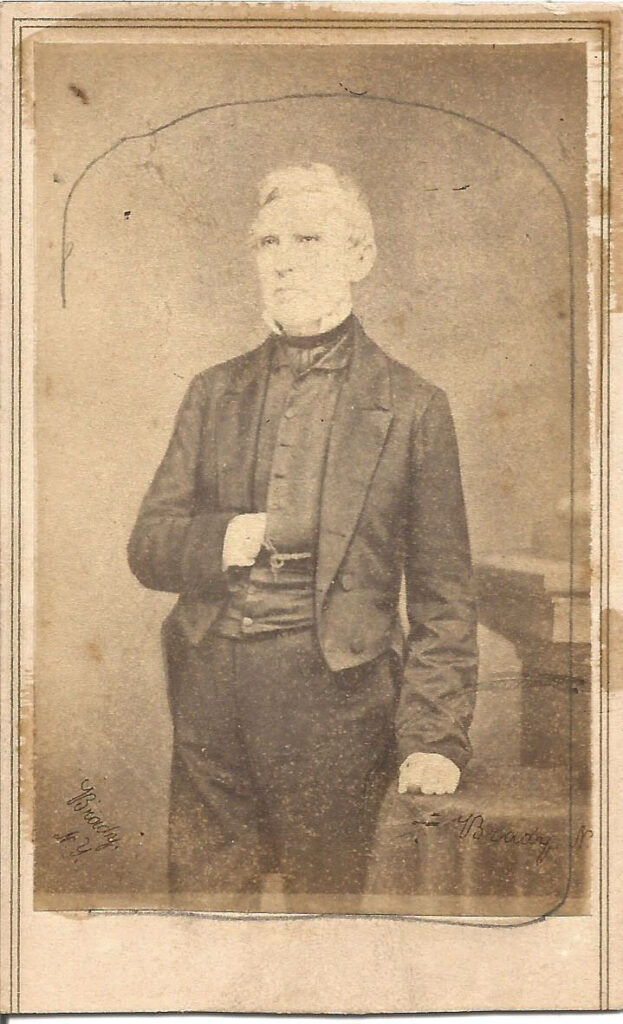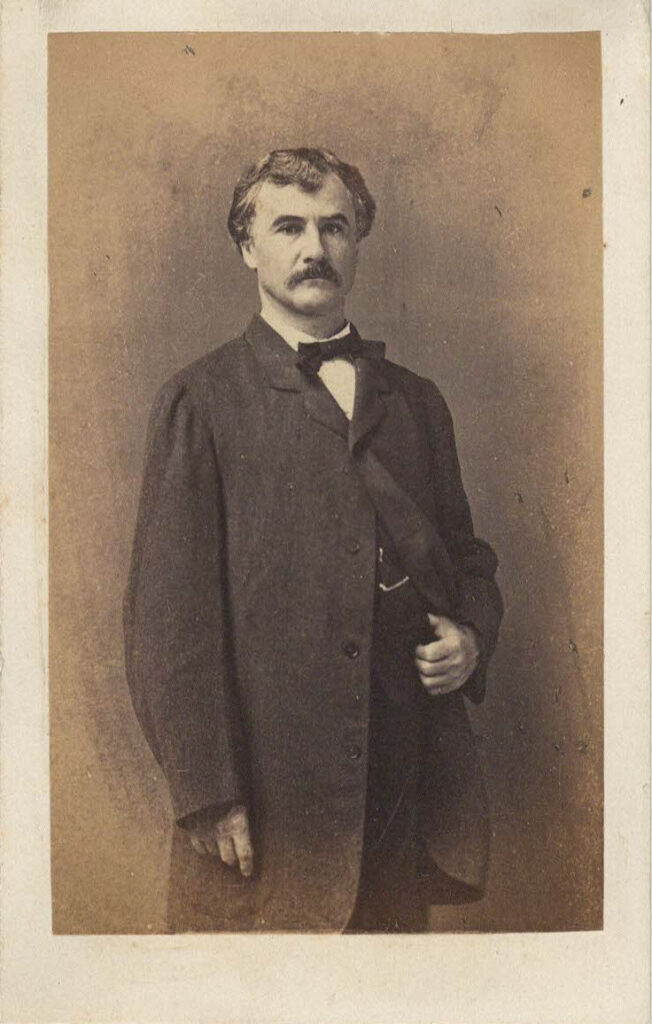Section #22 - The Southern States secede and the attack on Ft. Sumter signals the start of the Civil War
Chapter 264: After The Fact, Congressional Committees Hear Compromise Proposals
December 20, 1860
The Senate’s “Committee Of 13” Focuses On The “Crittenden Compromise”
On the same day that South Carolina votes to secede, the second meeting of the Senate’s “Committee of 13” designed to prevent that outcome hears a series of compromise proposals.
Included here are ideas from Southerners Jefferson Davis and Robert Toombs and Northerner Stephen Douglas.
But the leading contender is a very ambitious proposal set forth by the Border State member, John J. Crittenden of Kentucky, the most senior statesman present and the one man most determined to find a way to save the Union.

Crittenden calls upon Congress to once and for all end the sectional conflict over slavery by passing six amendments to the U.S. Constitution.
The centerpiece is a familiar plea to extend the 36’30” Missouri Compromise line across all the remaining western territories, with slavery prohibited to the north and allowed to the south until the settlers apply for statehood and declare their preference. Furthermore this type of “dividing line” would be applied to any new land “hereafter acquired” by the United States.
Southerners on the Committee of 13 applaud this idea, since it formally “recognizes” African slavery within the wording of the Constitution, and also appears to sanction the idea of new land (e.g. in Mexico, Cuba, etc.) where the institution might take hold.
Crittenden’s other five amendments are also tilted toward the South. Congress would be forbidden to ban slavery in DC or on military posts or to interfere with selling slaves across state lines. It would vigorously enforce the return of run-aways and compensate owners for any lost slaves. And “no future amendments” would be allowed to change these commitments.
The Northern members of the Committee of 13 – especially the Republicans – see nothing to like about Crittenden’s amendments and say so at the meeting.
Given the initial impasse, the Committee of 13 adjourns after agreeing to resume talks on December 26.
Sidebar: The Crittenden Compromise Amendments
Here is the exact wording proposed by JJ Crittenden:
- Slavery would be prohibited in any territory of the United States now held, or hereafter acquired,” north of latitude 36 degrees, 30 minutes line. In territories south of this line, slavery of the African race was “hereby recognized” and could not be interfered with by Congress. Furthermore, property in African slaves was to be “protected by all the departments of the territorial government during its continuance.” States would be admitted to the Union from any territory with or without slavery as their constitutions provided.
- Congress was forbidden to abolish slavery in places under its jurisdiction within a slave state such as a military post.
- Congress could not abolish slavery in the District of Columbia so long as it existed in the adjoining states of Virginia and Maryland and without the consent of the District’s inhabitants. Compensation would be given to owners who refused consent to abolition.
- Congress could not prohibit or interfere with the interstate slave trade.
- Congress would provide full compensation to owners of rescued fugitive slaves. Congress was empowered to sue the county in which obstruction to the fugitive slave laws took place to recover payment; the county, in turn, could sue “the wrong doers or rescuers” who prevented the return of the fugitive.
- No future amendment of the Constitution could change these amendments or authorize or empower Congress to interfere with slavery within any slave state.
December 20, 1860
The House “Committee Of 33” Considers The “Henry Winter Davis Compromise”
In the House, the Committee of 33 under Tom Corwin of Ohio is also struggling to find answers.
On December 17, 1860, Albert Rust of Arkansas and Thomas Nelson of Tennessee offer a Southern proposal which, like the Crittenden plan, would guarantee the presence of slavery in all territory south of the 36’30’ line. This so-called “Rust-Nelson Plan “is being discussed on December 20, when representative Henry Winter Davis of Maryland, announces a different option.

Davis argues for immediately creating one new state out of all the remaining western territory south of the 36’30” line, admitting it forthwith into the Union, and then allowing the settlers there to vote on a Free or Slave status. This approach mirrors the traditional Democratic Party call for “popular sovereignty” to decide the issue – and the fact that it comes from a slave state congressman, appears to shake the solidarity of the Southerners on the committee.
One Northerner who sees some hope in the Davis proposal is the Republican from Massachusetts, Charles Francis Adams. Along with some others, he believes the weather and soil across this New Mexico land would not support a plantation economy, so a popsov vote is likely to go against slavery in the end.
If other Republicans would join him in backing the Henry Winter Davis proposal, along with an amendment to the Constitution protecting slavery in all states where it currently exists, perhaps that compromise would save the Union and avoid a civil war.
Adams’ next step lies in trying to convince his colleagues to get behind the Davis option.